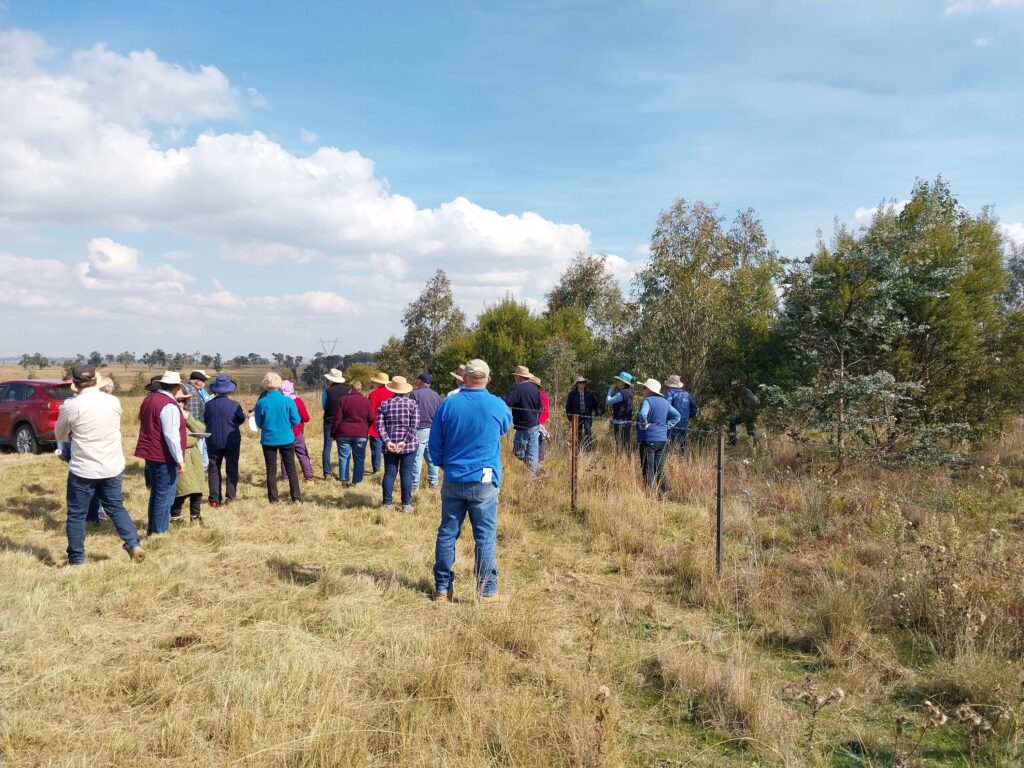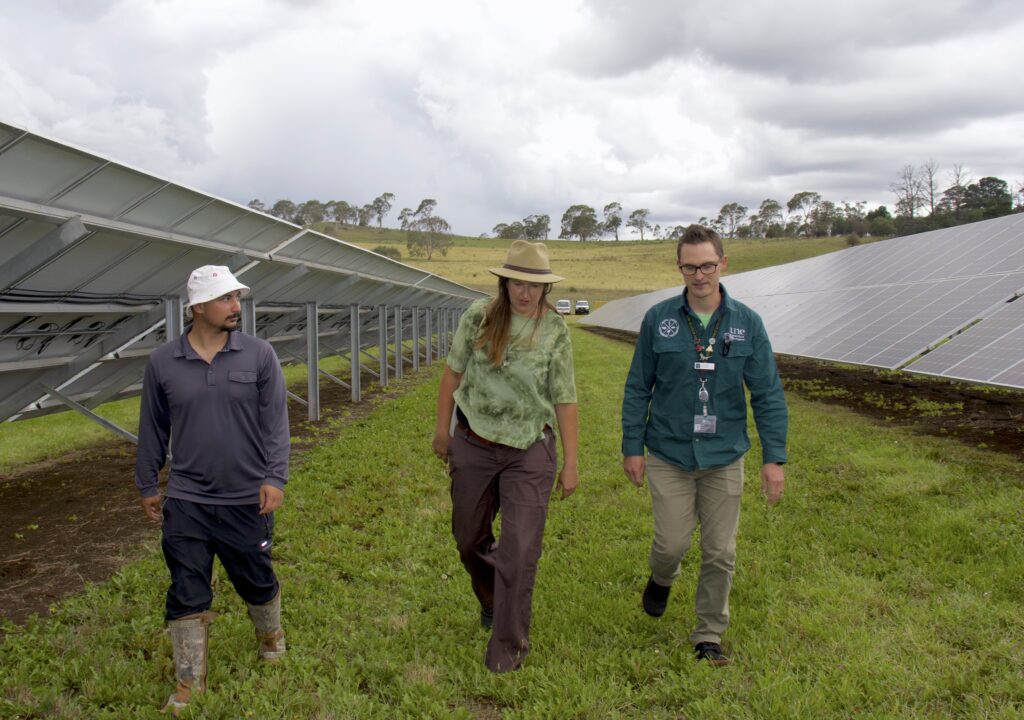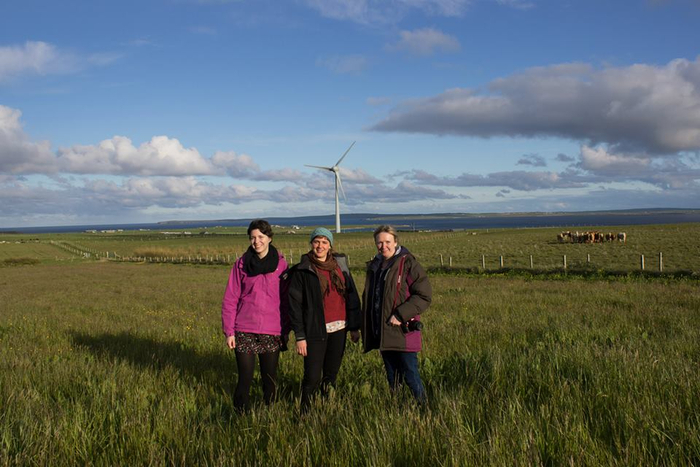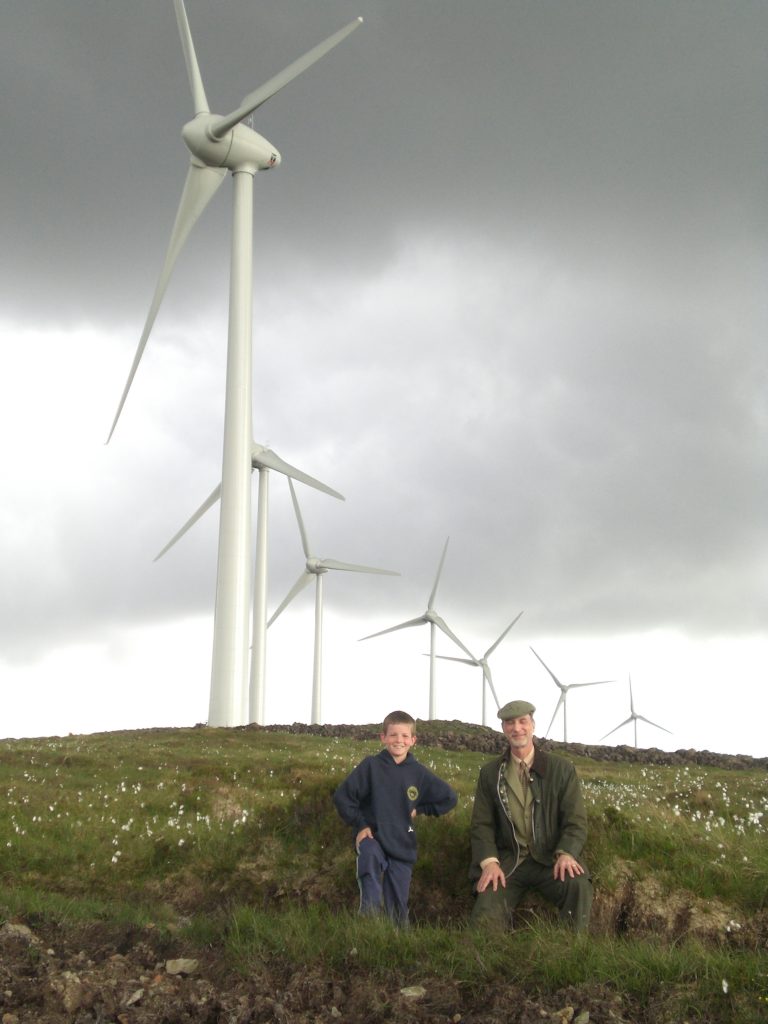Our new guide developed in New England sets out how new solar farm projects can improve biodiversity on the same sites.
The Building Better Biodiversity on Solar Farms Guide presents innovative strategies and tools to restore nature and integrate regenerative farming techniques while producing solar energy. The guide has been developed in collaboration with ecologists, wildlife experts, researchers, farmers, Cultural Knowledge Holders, Landcare groups and renewable energy developers.
“Planning a renewable energy development offers a chance to consider shared land use,” says co-author Heidi McElnea, Regional Coordinator at Community Power Agency.
“We know from projects being developed in Asia, Europe, the US and now emerging in Australia, that conservation and agriculture don’t need to come off second best to renewable energy.
“It’s also a chance to engage and employ local First Nations ranger groups, and tap into a long history of holistic land management while supporting that important re-connection to Country,” Ms McElnea said.
While the guide is tailored to the unique ecosystem of the New England Tableland bioregion in northern NSW, its principles are relevant across the broad Australian landscape.
The guide emphasises that well-designed solar farms can achieve a net gain in biodiversity, without compromising solar generation capacity.


“By integrating biodiversity considerations from the outset of planning a new solar farm, we can achieve substantial benefits. This includes minimising negative impacts, fostering on-site biodiversity enhancement and collaborating with neighbouring communities to bolster local biodiversity,” says co-author David Carr, Founder and Director, Stringybark Ecological.
Moreover, the guide outlines co-benefits for industry, illustrating how developments can be future-proofed and streamline the approval process by exceeding current legislated requirements. By achieving biodiversity increases and leveraging ecosystem services, industry players can also build constructive relationships with host communities and Traditional Owners, while reducing land use conflict.
The guide couldn’t come at a more critical time, as Australia grapples with the urgency of addressing the intersecting challenges of climate change and biodiversity loss.
Dr Eric Nordberg from the University of New England is a researcher in the new field of conservoltaics, and has contributed some of his findings to the guide.
“Similar to artificial reefs in aquatic ecosystems, solar farms can serve as hubs for biodiversity enhancement, introducing structural complexity into the environment and providing crucial shelter and habitat for various species,” Dr Nordberg said.
The guide has been funded by The Foundation for Rural & Regional Renewal, and will be launched in collaboration with Glen Innes Natural Resources Advisory Committee and Southern New England Landcare.







